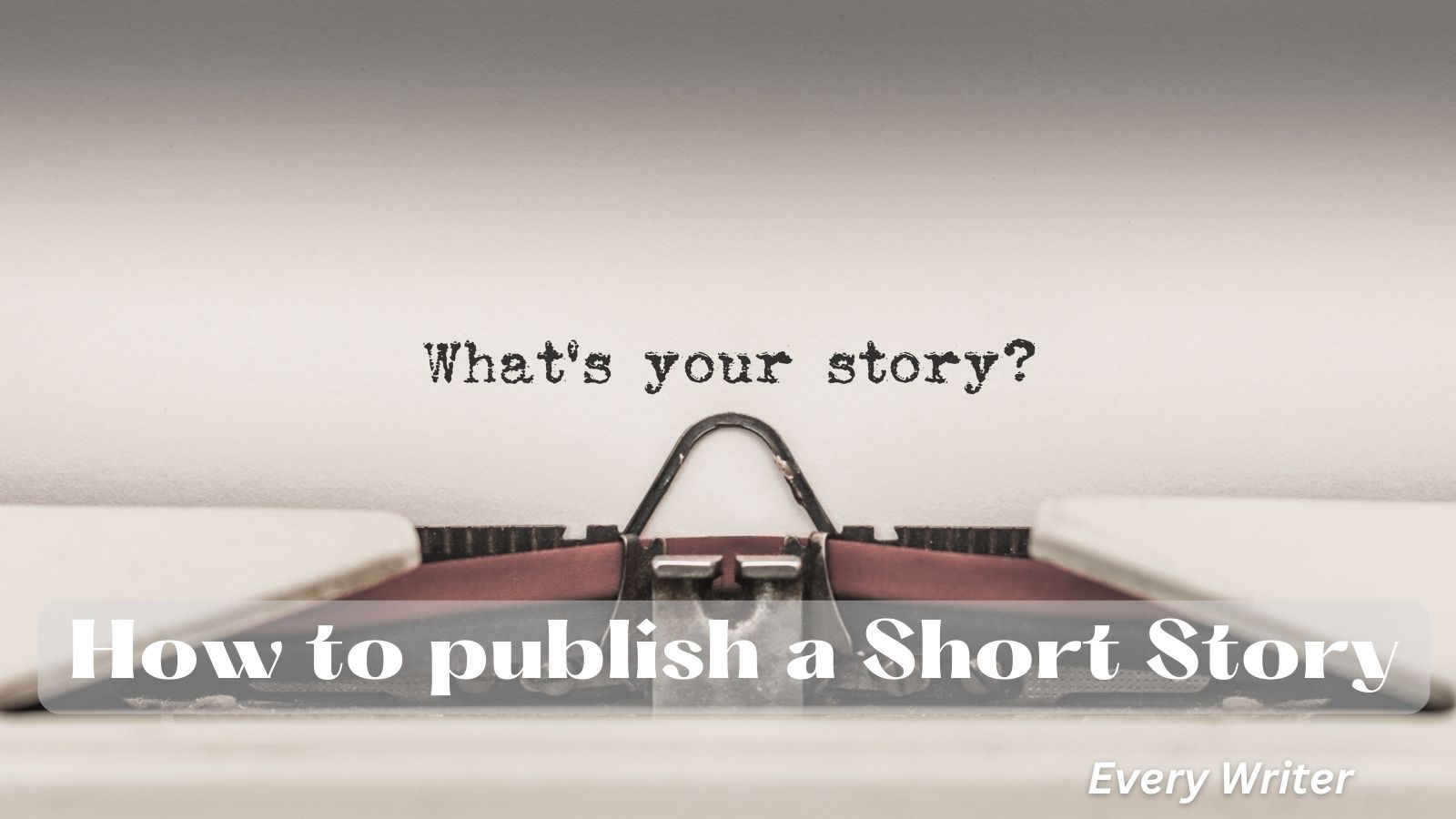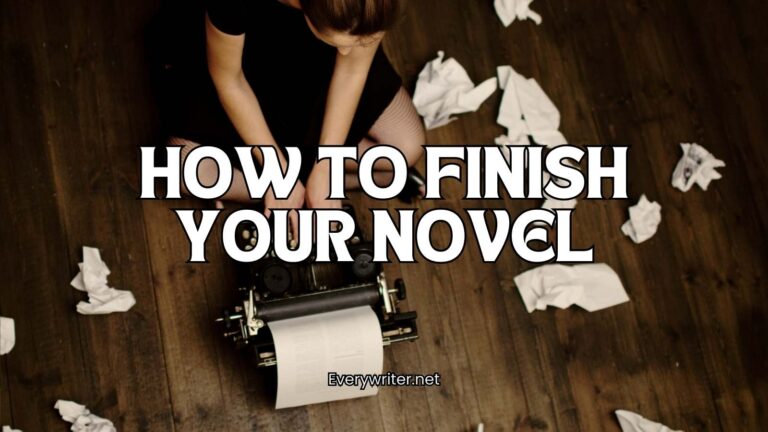
Knowing how to publish a short story is not difficult. I’m astonished by how many writers are terrified to have others read their work. Many people are happy to have a few readers. Some writers will post work on their Facebook, Instagram, blogs, or web pages and let 100s of people read it, but they are afraid to get one rejection from an editor. This is silly. Writing might be a lone process; we may be alone in creating our worlds, but sharing your writing with others is one of the most fulfilling experiences of the literary process. See our literary magazine listings to find a magazine to submit your work.
This is a short article about how to publish your short story. It could be a better article. I wanted to give those writers out there who are somewhat afraid of this process some reassurance. There is no magic here. Everyone does it the same way. Many professionals, even well-known writers, still do this. Please don’t email me or post a mean comment and say Stephen King doesn’t follow this process. That’s true, I’m sure. He has an agent. He doesn’t have to submit a short story. The magazines are looking for him, but some professional writers still follow this process.
Option 1 Traditional Route
1. Spend time on your work
There used to be cost involved. You had to print, mail, and stamp your submissions. Imagine those of you who have never seen a typewriter; how would it feel to go through 5 or 6 hours of typing to get your work in shape and send it out? Starting a new file meant crunching the paper and tossing it into the wastebasket. The time and energy it took to create a piece ready for submission were substantial. Now it just tap, tap, and the mistake is all gone.
Computers improve the finished product, but they make it much easier to overlook mistakes. A writer doesn’t have to labor over a sheet of paper to get their writing to LOOK professional. There is much difference these days between looking professional and having a professionally prepared piece.
But the point is here; you have more time to write and edit and less typing. It is easier, so check, check, check, double-check. (And I’m sure there are some typos in this piece, so do better than I did when you send your work to a magazine for publication, and don’t send hate mail!)
Just spend time with your writing. Like in the days of old, spend time reading and rereading. Labor with it. Spend time with your work.
2. Find a market: Find the Guidelines
In the old days, before the internet, writers dug through books like Writer’s Market to find a publishing solution for their writing problems. They spent significant time reading entries to find the right place to send their work. It wasn’t difficult. It just took time.
Today most magazines and zines have their submission information listed on their websites. FIND THE SUBMISSION GUIDELINES BEFORE YOU SUBMIT YOUR SHORT STORY. , if you write horror fiction, do not send it to an erotic publisher. Before you send your work, learn as much as possible about the publisher. Write the work without influence. You’ll find a market. There is a place to publish for everyone. Make sure you read the magazine. Writers are used to buying many “sample copies.” It helped to keep magazines going. These days you have to read the examples on the website (most of the time, don’t send hate mail!)
3. What does the editor want?
Does the magazine or zine take online submissions? Many writers now send out their work before they look. If you know a little bit about the market, you first learn that many magazines take email, and some do not. Only send your work with being sure. Sites might need to specify. Query the magazines before you send your work. Some magazines take months to respond to a work of fiction. If you send your work to a site that does not accept online submissions, you might be waiting a long time to hear back from them to find they disregarded your submission. Most editors will delete unwanted work without ever reading it. Make sure you know first.
4. Format
The format for most submissions is pretty simple. You can use 1 inch or the default settings in Word or a word processing program, and most of the time, it will be fine. Just make sure to look for any special requirements in the submissions section of the magazine or zine. The most important part of formatting today is determining the file format to send the work. Most zines or magazines specify this on their site. Many sites avoid viruses by restricting file submissions, but some want a .doc or .pdf attachment. It is all up to the editor, and preferences vary greatly. Suppose you know which format to send your work in, email and ask. Most editors will be kind in their responses. If they are jerks, move on to the subsequent publication. Find out first. It will only be considered if you send a file in a suitable format. Make sure your name, address, phone number, and email are on the top of the first page of your short story. There is NO NEED FOR A TITLE PAGE.
5. Writing a bio
Write your bio in the 3rd person. Keep it short, and list your publications, if any. You can follow this short bio scaffolding if you are having trouble.
Please keep it simple and to the point. Some magazines create almost gag-like bios, but before you make it to that point, you want to make yourself look good. It should be based solely on the merit of your work, but small zine editors are trying to build a name. Sometimes you do see work published just for the bio. It happens much more now than ever before. It will be fine with more significant, better, established publications. They won’t give a frog who you are.
6. Write a cover letter
It is good practice to write a cover letter, even for a short story submitted through email. It would be best if you told the editor a little about yourself.
7. Wait
Zines and magazine editors tend to be busy people. They take an ungodly long time to respond. Just sit and wait. Usually, it is okay to follow up after a couple of months, but only email, call, mail, or fax every day asking if you’ll be in next month’s issue. Just wait.
8. Don’t be ashamed.
I hear many writers shaming themselves for not sending in their work. Don’t be ashamed; do it. The worst thing that can happen is getting a rejection letter.
9. Repeat
This article was moved from another page to here. It was updated and edited with changes.
Option 2 SelfPublishing (Multiple Options)
To start, you should still see number 1 from option 1. It is best to spend time on your work. You want to make sure it is as good as possible. Today, there are many ways you can publish your work without going through a literary magazine or a gatekeeper.
- Editing is most important if you are not going the traditional route. In conventional editing, you have helped before your writing reaches the public, but if you self-publish, you own every mistake. This means that when the world sees them, they only have you to blame.
- There are many ways to self-publish a short story.
- You can use social media accounts to bring your stories to your audience. You will get instant feedback. The most significant drawbacks are only reaching your followers and being in an echo chamber. Your friends and family may need to be better judges of your work.
- Sharing platforms: Writers do have the option today to get feedback on their work on platforms that were built to bring their work to a larger audience. An excellent example of this is Wattpad or Inkitt. Many writers use these two platforms to get their work out there. These platforms are often used more for editing and drafting than for final publication. They are valuable tools; some may want their stories to appear there.
- Blogs and personal websites, you do have the option of starting your website. There are many options like WordPress, Squarespace, and even tumbler. You will get a wider readership from sharing, but you will not get the same accolades from being published in a journal or literary magazine.
Option 3 Money Making
- If you want to avoid putting your stories in a magazine, you can collect multiple stories in a book, self-publish the book and sell it. There aren’t many magazines that will pay you well for your stories. You shouldn’t try, but if you decide to self-publish your story, you might as well make money off it.
- Amazon for short stories is another way to sell your shorts for the money. The length needed to do this is a grey area. I’ve seen sites say Amazon shorts need to be 2500 words, but I have talked to authors, and they say 5000 words and up is best. People do sell and make money by selling their stories.
There are many ways to publish a short story in 2023. This gives you a general idea of many of the options. If you think of other ways to get your work out there, please leave a comment. If you have any questions or general observations, please leave your comment below.
[DISPLAY_ULTIMATE_SOCIAL_ICONS]
- A Complete Guide to the Hero’s Journey in Storytelling (Free Worksheet) - April 10, 2025
- On Literary Criticism by Ambrose Bierce - April 9, 2025
- 2025 “Boost Your Happiness” Monthly Haiku Challenge - April 9, 2025






Good advice.
It’s still much of a lottery to get a story accepted. Ive a few things published but so far no short stories!
“Many writers now simply send out there work before they look.”
My first inclination was to think that this sentence contains a typo.
My second inclination was to think that this is a brilliant sentence construction without a typo.
First thought best thought? Not always. Not always at all.
I wrote this long ago….I would go with a brilliant sentence….
I’ve read a lot of great blogs, but yours had the biggest impact on me.
A very interesting topic that I have been looking at, I think this is one of the most important information for me. And I’m glad to read your post. Thanks for sharing!